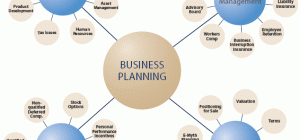 Preparing a good business budget is an essential step for the success of any business. Not only an effective budgeting strategy influences long-term development for the company but also establishes solid relationships with other business partners and prospective customers.
Preparing a good business budget is an essential step for the success of any business. Not only an effective budgeting strategy influences long-term development for the company but also establishes solid relationships with other business partners and prospective customers.
Sales Planning
Consider the historical patterns of behavior for your customers, your markets, your products, and your competitors. The success of your company depends on the success of your customers.
Company sales will be affected by the economy. Identify how future economic events will affect your business. This includes looking at consumer outlook, inflation, taxes, political events, and the business cycle.
Ask the sales organization for its input. The salespeople know the customers and markets better than anyone else. Salespeople are optimistic, by their stereotypical nature. On the other hand, they have been known to ‘‘low-ball'' forecasts in order to minimize quotas. Somehow, given the balance between these two forces, a consensus forecast by the sales team usually provides very usable information.
Identify all known or anticipated events that will affect your market in the upcoming year. This should include competitors entering or leaving the market and product additions and eliminations. Industry trade shows are an excellent source of this information: Look at what is and what is not being featured. What shows companies take booths at is often an indicator of those companies' perceived strategic identity.
The sales and marketing teams should identify the level of customer service that is necessary if the company is to achieve a competitive advantage. Strategies involving inventory and the entire supply chain should be based upon customer service expectations.
Operations Planning
Capacity should be defined based upon the expected product mix. This will provide insights into pricing decisions and decisions as to whether to pursue marginal business.
Product mix capability and flexibility are very important. How rapidly machinery can be changed between products will provide guidance for determining required minimum orders and the extent to which discounts should be offered for very large orders.
The company should consider the number of shifts to be operated. This depends on both the relative efficiency of each shift and the size of an ideal production run. If machine changeover is expensive, working four 10- or 12-hour shifts will be more cost-effective than working five 8-hour days. Overtime can be built into the schedule.
Technology can make a major contribution to improving the efficiency of the overall operation. Establishing computerized hookups among customer orders, machine and workforce schedules, and raw material logistics will:
Improve customer service
- Accelerate billing and cash flow
- Reduce work-in-process inventory and time
- Reduce raw materials inventory
- Usually pay for itself in less than a year
- The capital budget can be prepared after all of the previously mentioned analyses have been performed.
- You should consider outsourcing less important resource consuming operations. This will free up assets, cash, and people for more important activities.
A Guide to Better Budgets
Start simple.
Have each function and area of responsibility prepare its own budget, consistent with corporate goals, objectives, constraints, and policies.
Recognize that effective budgets require senior management approval and the endorsement of the organization.
Understand that having a budget improves the performance of the entire organization and each of its parts— really.
Understand that a budget is developed to ensure that every department head is working toward the same goal, with knowledge of the department's resources and constraints.
Recognize that the budget department does not create the budget. It is simply a coordinator, consultant, and adviser.
Arrange educational meetings to ensure an understanding of the process and the expectations for it. Do this at least twice during the process.
Make certain that interdepartmental relations are coordinated.
Departments cannot perform well without the cooperation of other departments. Make certain that these interdependencies are properly documented.
Ensure that expenditures above a specific threshold amount that are included in the budget are supported with proper documentation and financial analysis.
Incorporate into the budget procedure specific requirements covering approval for nonbudgeted expenditures and cost overruns.
To sell the budget concept, select one department or profit center manager to convey the value of developing an intelligent budget. Demonstrate how the budget has improved the performance of this manager's organization. The word will spread among the manager's peers.
Express budget procedures in writing. Document corporate targets, policies, and constraints and convey them to everyone who is involved in the process. Update this documentation frequently.
Provide each involved department with information on the department's past financial and statistical history, known economic factors, and the accounting chart of accounts in order to properly prepare the department for effective participation. Classify the expenditures of individual departments care Business fully. Do not arbitrarily allocate common costs to individual profit centers.
Budget product and service costs on a per-unit basis if possible.
Be realistic.
Do not create theoretical models that make accountability unachievable.
Prepare budgets that incorporate alternative environments and competitive factors. Have a fallback plan available for emergencies; identify best- and worst-case scenarios. This enhances the thought process.
Base the sales forecast on realistic expectations. Like all other budgets, it should be achievable, but a challenge.
Establish production plans in accordance with a detailed forecast. Incorporate purchasing and inventory strategies and product pricing expectations.
Incorporate the cash flow improvements from the capital expenditure budget into the operating budget. These are interrelated parts of the planning process.
Develop and share the positive and negative elements of past budget efforts into the current process. Learn from both the successes and the mistakes.
Make sure that reports of actual performance are provided to responsibility centers in a timely manner, with the appropriate level of detail.
Never forget that a budget and its forecast components are estimates. Precision does not count.
Improve the quality and effectiveness of the process continuously.
Make sure that everyone knows that you are focusing on this issue. Solicit and accept feedback from participants.







